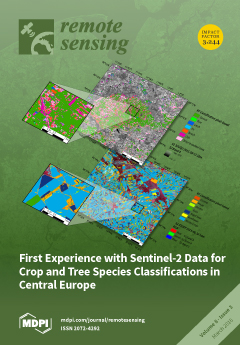Regional haze episodes have occurred frequently in eastern China over the past decades. As a critical indicator to evaluate air quality, the mass concentration of ambient fine particulate matters smaller than 2.5 ?m in aerodynamic diameter (PM
2.5) is involved in many studies. To overcome the limitations of ground measurements on PM
2.5 concentration, which is featured in disperse representation and coarse coverage, many statistical models were developed to depict the relationship between ground-level PM
2.5 and satellite-derived aerosol optical depth (AOD). However, the current satellite-derived AOD products and statistical models on PM
2.5–AOD are insufficient to investigate PM
2.5 characteristics at the urban scale, in that spatial resolution is crucial to identify the relationship between PM
2.5 and anthropogenic activities. This paper presents a geographically and temporally weighted regression (GTWR) model to generate ground-level PM
2.5 concentrations from satellite-derived 500 m AOD. The GTWR model incorporates the SARA (simplified high resolution MODIS aerosol retrieval algorithm) AOD product with meteorological variables, including planetary boundary layer height (PBLH), relative humidity (RH), wind speed (WS), and temperature (TEMP) extracted from WRF (weather research and forecasting) assimilation to depict the spatio-temporal dynamics in the PM
2.5–AOD relationship. The estimated ground-level PM
2.5 concentration has 500 m resolution at the MODIS satellite’s overpass moments twice a day, which can be used for air quality monitoring and haze tracking at the urban and regional scale. To test the performance of the GTWR model, a case study was carried out in a region covering the adjacent parts of Jiangsu, Shandong, Henan, and Anhui provinces in central China. A cross validation was done to evaluate the performance of the GTWR model. Compared with OLS, GWR, and TWR models, the GTWR model obtained the highest value of coefficient of determination (
R2) and the lowest values of mean absolute difference (MAD), root mean square error (RMSE), and mean absolute percentage error (MAPE).
Full article





